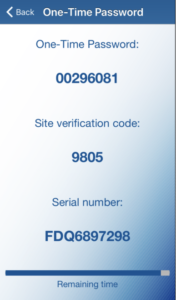
The mobile phone has given app developers and businesses a new option for a physical security token. One of the most popular ways of providing a security token is through something most people have: a mobile phone. Technology has opened the door for more options when it comes to security tokens. Users are being tricked via social engineering to hand over the OTP generated by a security token, which can grant access to accounts by bad actors making use of stolen credentials. In addition, the increased volume of social engineering attacks brought on during the global pandemic has increased the vulnerability of security tokens that generate one-time passwords (OTPs). If a user does not protect their security token it can fall into the hands of a bad actor. The main vulnerability to security tokens is the user. If a user does not have access to their security token they will need to use a secondary recovery authentication method which can be cumbersome. USB cards and fobs, for example, are tiny and can be easily lost. Any physical object can be lost or stolen, and depending on the type of token, bad actors with physical possession can use them to hack into accounts and systems. The main drawback to security tokens is that they are physical objects. Security tokens can take many forms, and employ a variety of communication protocols, for interoperability and flexibility. Since physical tokens are not connected to an online network, hackers cannot access them.

The benefit of this authentication method is being a physical (not digital) way of bringing security to a digital system. Security tokens can be included at different steps based on the need. These steps can increase or decrease based on the security needed. Multi-factor authentication can include two or more steps for verification. The second step can use a digital security token as part of the process.
#Soft tokens verification
Two-factor authentication, also called two-step verification, requires the user to present another verification beyond the normal password. The token becomes part of the security chain of two-factor or multi-factor authentication.
#Soft tokens Bluetooth
For a contactless token, the physical device connects wirelessly to the system to gain access, such as via Bluetooth or NFC token.īecause of the increasing levels of social engineering and hacking and the associated costs, companies are increasingly investing in digital security tokens to move beyond passwords and add stronger levels of security.ĭigital tokens help protect the entire computer network for a business, no matter how it is accessed.

Challenge-response - The token provides the answer to a question.
#Soft tokens password
Dynamic password - Unique one-time codes which expire and rotate, and either should be read and entered by the user or can remain unseen and transmitted automatically.It usually remains unseen by the user for their own security. Static password - A password is stored and transmitted by the token communication protocol.The information used for authentication is usually presented in one of three forms: Security tokens contain cryptographic data that uniquely identifies a device owned by a user.

When used in an MFA flow the security token is considered a “possession” factor ie “something the user has”, which can be combined with an inherence or knowledge factor for MFA. Security tokens are used to authenticate users, and they can be used either to substitute passwords or other authentication methods or used as additional authentication in multi-factor authentication (MFA) flow. Car remotes are examples of security tokens people use regularly. Security tokens come in many form factors such as a USB key or a name badge containing a chip inside. The token typically contains cryptographic information that is specific for each user and is used for user authentication into that system. Security tokens are physical devices that people use as hardware authenticators to securely access a system.


 0 kommentar(er)
0 kommentar(er)
